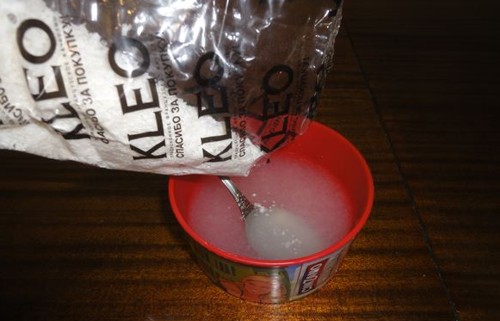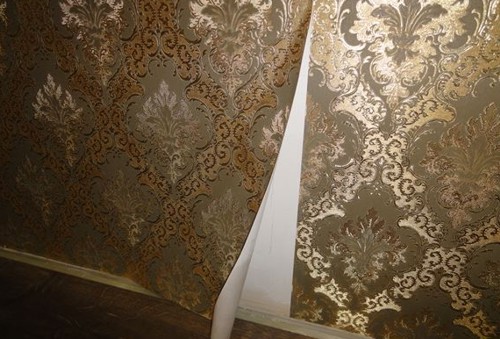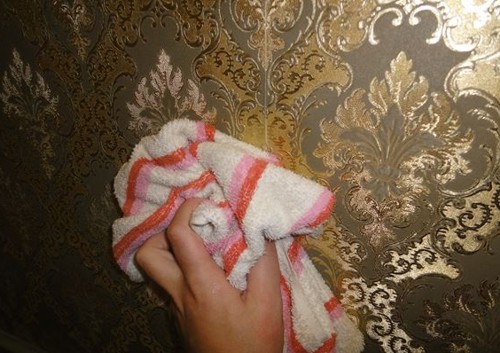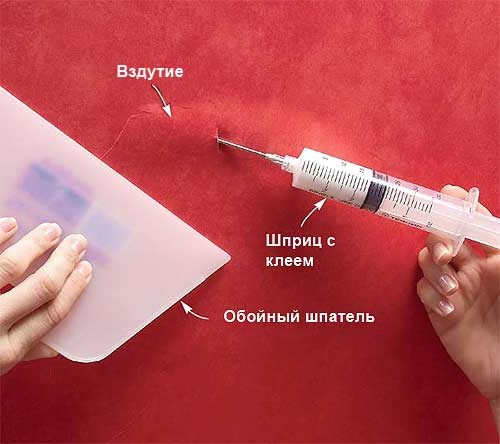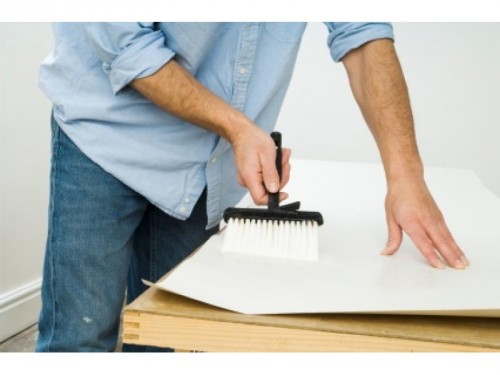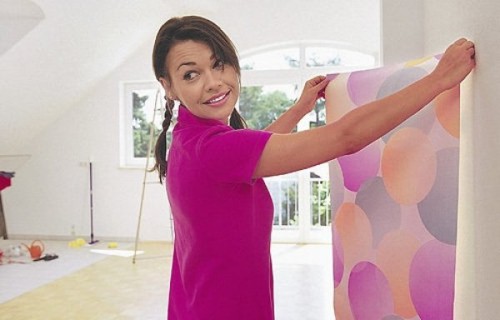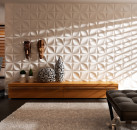The repair is almost completed - it remains to finish several strips of wallpaper and you can go to rest. But the next day, the surprises “meet” us - in some places the wallpaper was covered with bubbles, and at the joints they did not want to stick at all. What could be the cause of the otten wallpaper?
Content
It’s good when the wallpaper has peeled off only at the joints and in some places. But it also happens that the whole strip departs from the wall or from the ceiling and it is necessary to re -cross it.
Why this happens
Wallpaper gluing is a process consisting of several operations that must be performed sequentially. If you violate at least one requirement, this can lead to sad consequences.
When the wallpaper leaves the wall, this may mean that the surface was poorly prepared. It is especially difficult to glue wallpaper on the wall covered with lime whitewashing. Such walls in Stalinks and Khrushchevs are not uncommon. You need to prepare the surface for wallpapering with particular care. Experts recommend completely removing lime from the wall and clean it well. In addition, if you do not grind the wall or ceiling, then you should not expect a high -quality adhesion of the wallpaper.
In addition to preparing the surface, surprises can also be expected from glue. It can also be of poor quality. Therefore, before purchasing glue, pay attention to the expiration date. If you decide to glue the wallpaper for the first time, it is better not to trust advertisements, but to buy a proven tool.
And a few more words about Klee - often the tips of the neighbors can ruin all the work. In the 50-60s, it was popular to cook glue from water and flour. Such glue was widely used for wallpaper gluing. Now the quality of the material has changed and such a "Clayster" is no longer coping with its task. Therefore, you should not listen to such tips - it is better to purchase quality glue that will approach your type of wallpaper.
The main reasons for the omission of wallpaper:
- Wall defect. In their own house or in the apartment, over time, the walls begin to deform. Even in a new building, this phenomenon cannot be excluded. Therefore, be sure to check the walls for strength before starting work. How to do this: take a hammer or other tool and carefully tap the wall, you can use a screwdriver and “slide” part of the plaster. If it succumbs and sprinkled down, then your wall is considered problematic and it is necessary to strengthen it. If you find a crack, then it cannot be ignored - you won’t catch it right away, the wallpaper can fall off with part of the plaster. It is better to clean the wall, and cover deep cracks and chips with a cement mortar.
- The base is poorly prepared. This is the most common reason for peeling wallpaper. Perhaps you were too lazy to remove completely old wallpapers or traces of old whitewashing, plaster or paint remained on the walls and ceiling. Even when you are advised not to remove the old whitewashing and glue the wallpaper directly on it - you do not need to trust the words, anyway, in some places there will appear air bubbles or wallpaper will disappear altogether. And it also happens that, wanting to finish the repair faster, one important stage is missed - working with a primer mixture. She was simply forgotten to apply. Naturally, it is not worthwhile to expect wallpaper well with an unprocessed surface.
- Non -compliance with recommendations. It would seem that everything is done correctly, but the wallpaper still disappears. The reason may be that the time should pass between each stage of the technology of wall preparation so that after plaster, putty and primer, each layer is well dried. If you stick the canvas on a wet surface, then the wallpaper can move in the corners. Also, you do not need to ignore the recommendations on the package. Even if there is experience in repair work, you still need to study in detail the instructions on the packaging of glue and wallpaper. Working rules may differ.
- Glue is applied unevenly. This is a frequent violation when, according to the instructions, the glue should be applied to the wall or ceiling, and it is distributed along the canvas. Or when there is no roller, glue is applied with a brush and passes are obtained. It also happens that the adhesive composition was not allowed to do well or applied it very little.
- Wallpaper dries very slowly or too fast. In order to prevent the indentation of the wallpaper, follow the evaporation of moisture. She should not evaporate quickly. When experts say that it is impossible to open windows and doors to prevent drafts, you need to listen to these tips. If the repair is carried out in the heat, then the windows that go to the sunny side must be closed. The low temperature and high humidity in the room lead to the fact that the wallpaper will dry slowly and subsequently bloating will appear on them.
- The use of poor -quality materials. Did you do everything according to the rules, but do the wallpaper still peel off? Perhaps the reason lies in the use of poor -quality materials? It is worth paying attention to the storage conditions and the shelf life of building materials. In order to avoid acquiring low -quality materials, it is better to buy them in building materials.
How to glue the peeled wallpaper
When we see how the result of our many hours of work collapses before our eyes, the question involuntarily arises, what to do when the wallpaper is peeled off?
Before starting work, study these tips:
- it is undesirable to use the popular PVA glue, because it does not dissolve in water and it will be very difficult to remove wallpaper from the walls before the next repair. The likelihood of yellow spots on the wallpaper is not excluded;
- the wallpaper that moved away from the wall or ceiling can be glued with wallpaper glue. It is not necessary to breed it as you did when gluing - the consistency of the glue should be liquid;
- if the wallpaper moved away from the corner or peel off at the junctions, then it is better to use special glue, it is sold in tubes. Glue leaves no divorces and provides strong clutch.
What may be needed for gluing wallpaper:
- glue;
- brush;
- rubberized roller;
- pure rag;
- narrow spatula;
- large syringe;
- feng.
We glue the joints
When the wallpaper at the joints is peeled off, you can do as follows: gently bend the edges and remove the garbage with a spatula. Apply glue and press the edges with a rubber roller, remove the remaining glue with a clean dry rag.
If you need to glue the wallpaper that departed from the floor or ceiling, then also use glue for wallpaper. It is diluted with water so that it is not thick, and then the wallpaper is well smeared. You need to wait for about 5 minutes, then glue the strip to the wall. It is better not to open the windows for ventilation for the next two days.
How to get rid of bubbles and scratches
To get rid of such a defect, pick up glue in the syringe, and puncture the place of bloating with a needle. Then you need to carefully inject the glue inward and wait for about 5 minutes. During this time, the adhesive solution softens the paper base, and you only have to press and smooth the surface.
Surely you heard about this method of getting rid of large bubbles when you need to cut the wallpaper with a sharp construction knife. Try to avoid such recommendations, since it is almost impossible to combine the drawing at the section.
Getting rid of creases or so -called scratches is also simple: use the syringe and inject a little glue into the crease. Then the surface must be warmed with a hairdryer and gently straightened the scratch with a rubber roller. If excess glue protrude, they are removed with a clean dry rag. You will see that the scratch will disappear very quickly.
The resulting crack is enough to treat with glue.
We re -cross a large site
In the case when the wallpaper disappears in large sections or one strip has departed, they act as follows:
- First, the windows and doors are closed to avoid drafts.
- A stuck putty and garbage are removed from the cut of wallpaper. The same is done with the wall. It is allowed to use the vacuum cleaner and process the wall well.
- The strip is smeared with glue and left for 5-7 minutes so that it is well absorbed. For impregnation, you need more time than when gluing wallpaper for the first time.
- Treat the wall with glue. If you work with a strip that partially peel off - be careful and do not stick the front of the wallpaper with glue.
- Gently straighten the strip and attach it to the wall. It is advisable to work together in order to prevent bubbles and formation of bubbles.
- After gluing, go along the surface with a rubber roller and a clean rag.
When non -woven wallpaper
A common reason for removing wallpaper on a non -woven is non -compliance with the rules for gluing. Manufacturers attach instructions to the product that tells in detail how exactly you need to glue such wallpapers. The non -woven wallpaper does not glue the joint into the joint, in addition, the glue is applied only to the wall, and the canvas remains clean.
Also, all recommendations should be followed after the completion of gluing work and in no case should be allowed drafts.
Owned woven wallpapers are glued with glue and a narrow spatula. Glue is applied to the joints and walls, then you need to wait 10 minutes and press the canvas. For better adhesion, you can walk a roller and use a hairdryer.
If vinyl wallpapers have been peeled off, then it is necessary to recall exactly what glue you glued them. If the usual for paper wallpaper, then it is possible that later the wallpaper will fall to the floor. Vinyl wallpaper is glued to special glue. Drying can be accelerated either by air conditioners or fans, from this the wallpaper can also fall entirely.
Subject to all recommendations, you can always stick the wallpaper qualitatively, and you will not have problems with their removal.


